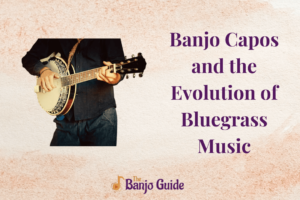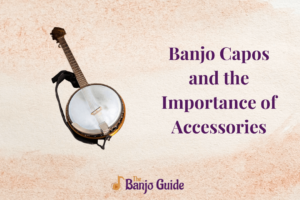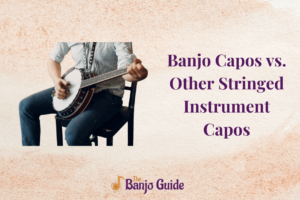Banjo is one unique instrument. This instrument can have a number of features to complement the unique playing styles and needs of an artist.
In this article, we will cover all about how to choose the right Savannah Banjo for your playing style, whether or not you will require a resonator, factors to look for, and what brands to consider.
Number Of Strings
- The traditional banjos come with 4 or 5 strings.
- Folk Music and Bluegrass players can make the most of 5 string banjos.
- Most of the string instruments have been tuned from low to high notes as you move across the neck of the instrument. In the 5-string banjo, there is a drone string. This string begins in the Banjo neck’s middle. This string has been tuned much higher in comparison to other strings.
- The 4-string Banjo, also known as the Plectrum Banjo, is similar to the 5-string banjo but does not come with the drone string. This banjo is strummed with a guitar plectrum.
- Most Dixieland bands use the 4 string Banjo over 5 string Banjo. It has a bright tone that easily cuts through the ensemble sound.
- There are also Banjos with 6 strings. Whether or not these musical instruments can be categorized as Banjos will depend on the point of contention. Played similarly to the guitar, it produces the sound of the Banjo. It has a membrane drumhead. This acts as the soundboard of the instrument.
- In recent years, banjos with 6 strings have started replacing the traditional 4 string banjos, especially in the Dixieland bands. The ease of transition offered by this Banjo to the guitarists is beyond phenomenal.
- But when it comes to “Folk Banjo” music, then the most reliable choice is the 5-string Banjo.
- The techniques used by instrument players on the 5-string Banjos are not available on the banjos with 6 strings.
Resonator Or No Resonator
- It is necessary to have a resonator to learn bluegrass banjo.
- On the backside of the banjo, the resonator encircles the body in a concave wooden shape.Using the resonator, you can make the instrument louder and more vibrant by reflecting sound off its inside surface and projecting it outward.
- Due to the fact that bluegrass musicians pluck individual strings one at a time in their solos, resonators are essential to their playing.
- Performing with open-back banjo results in a mellower tone since the instrument’s sound reflects off the performer’s body.
- Many singer-songwriters and claw-hammer players favor open-backed banjos.
Other Components
- The Head:
- Similar to the drums, Banjo has its head stretched across the pot top which acts as a board of sound.
- Originally, animal skin was used for making the head of the Banjo.
- Nowadays, mylar is used for making the head of the Banjo. This material is not made from animal dead skin and remains unaffected by humidity.
- The Bridge:
- Banjos are those musical instruments that have floating bridges.
- The instrument is not attached to the head and it’s held in place with the tension of the strings.
- Just like Rim, the bridges of the Banjo are also made with hardwood.
- When you are buying a Banjo, remember that the strings, bridge, and head of the Banjo can be replaced. As long as the body is undamaged and the neck is not warped, you can get a used Banjo just in case.
-
- The Pot:
- Pot refers to the body of the instrument that is shaped like a hoop.
- During string plucking, the bridge vibrates, thereby vibrating the head and body of the banjo, resulting in an audible sound.
- The Rim refers to the wooden hoop. All parts of the pot are attached to this wooden hoop. It makes one of the most resonating parts of the body of the Banjo.
- The Rim of the Banjo needs to be made of the highest quality hardwood.
- Most top-notch Banjos have Rims made with multiple maple layers which have been plied together.
- Rims that are cheap in quality are made with light metals and softer woods, thus producing low sound quality.
- The top brands of Banjo even prefer making the neck of the Banjo with maple.
- The Pot:
- 5Th String:
- When it comes to the Banjo music instrument, the 5th string is most of the time an exception.
- There are several brands that make 5th-string geared tuners. However, having a 5th string geared always makes a preferable choice.
Conclusion:
Having some basic information about banjos as well as things to look for in a banjo will help you shop for the right banjo indeed.
There is not any simple formula that you can follow to get your hands on the best musical instrument. You will have to take your needs and budget into consideration. The ultimate judge at the end of the day will certainly be your ears and fingers.
We would highly recommend that you shop for a banjo that fits your budget.
You can also check out hundreds and thousands of professional as well as online reviews.
We hope our blog will guide you in the right direction so you can purchase your new banjo with confidence.

I own a music instruments shop. My go to instrument is a banjo. My business makes it easier for me to access the instruments from various brands and of various types. I will give my honest opinion here to help out others in choosing the right instrument for them.





